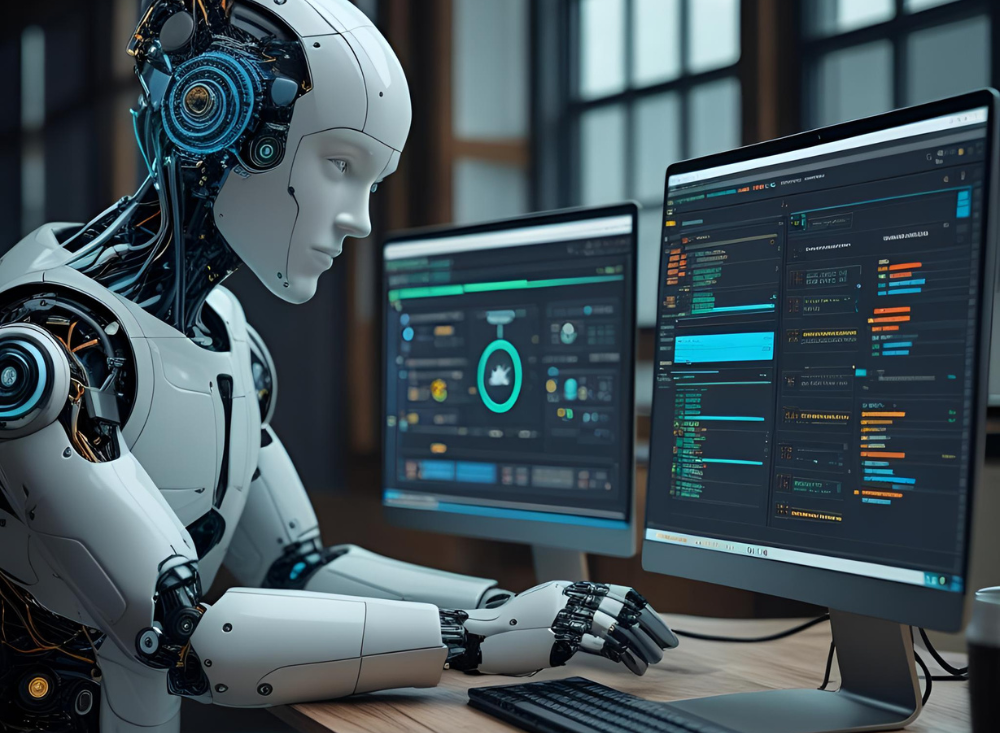
Continuous Integration and Continuous Deployment (CI/CD) pipelines are the backbone of modern software development, enabling rapid, iterative releases while maintaining quality. For AI-driven applications, which feature dynamic behaviors and complex interactions, ensuring robust testing within these pipelines is critical. AI-powered testing integrates seamlessly with CI/CD pipelines, automating testing processes and providing real-time feedback to ensure high-quality software.
The Role of CI/CD in Modern Development
CI/CD pipelines automate the process of building, testing, and deploying code, supporting agile and DevOps practices. They enable developers to integrate code changes frequently, run automated tests, and deploy updates quickly. For AI-driven systems, such as machine learning models or chatbots, CI/CD pipelines must address unique challenges, including:
- Dynamic Behaviors: Validating non-deterministic outputs, like personalized recommendations or adaptive interfaces.
- Complex Interactions: Ensuring seamless integration across diverse components, such as APIs or microservices.
- Frequent Updates: Testing rapidly evolving systems without delaying release cycles.
- Quality Assurance: Detecting defects, performance issues, or security vulnerabilities early.
- Scalability: Supporting large-scale applications with diverse user bases and environments.
AI-powered testing addresses these challenges by automating complex validation tasks and delivering actionable insights within CI/CD workflows.
How AI Enhances CI/CD Pipelines
AI leverages advanced techniques like machine learning, predictive analytics, and behavioral modeling to automate testing and provide real-time feedback in CI/CD pipelines. This integration ensures continuous quality assurance and rapid development cycles. Here’s how AI transforms testing within CI/CD:
1. Automated Test Case Generation
AI analyzes code changes, application requirements, and system behavior to automatically generate test cases for each CI/CD build. These cover functional, performance, and security scenarios, ensuring comprehensive validation without manual test design.
2. Intelligent Test Selection
AI identifies and prioritizes relevant test cases based on code modifications, focusing on impacted components. For example, if an API endpoint is updated, AI selects tests for that endpoint, reducing execution time and optimizing resource usage while maintaining thorough coverage.
3. Dynamic Test Adaptation
AI-driven applications evolve with new data or features, potentially breaking traditional test scripts. AI dynamically adapts test cases to reflect these changes, ensuring tests remain relevant across CI/CD iterations without manual updates.
4. Real-Time Feedback and Insights
AI provides real-time feedback during testing, highlighting defects, performance bottlenecks, or security vulnerabilities as soon as a build is triggered. Detailed reports with logs, screenshots, and remediation suggestions enable developers to address issues quickly, minimizing delays.
5. Predictive Issue Detection
AI uses predictive analytics to forecast potential failures by analyzing historical test data, code complexity, and change patterns. This proactive approach identifies high-risk areas, such as frequently modified modules, allowing focused testing within CI/CD pipelines.
6. Performance and Scalability Testing
AI simulates high-traffic scenarios and diverse user interactions within CI/CD builds, validating application performance and scalability. It identifies bottlenecks, like slow API responses, ensuring systems remain robust under real-world conditions.
7. Security Validation
AI scans code and simulates malicious inputs, such as injection attacks, to detect vulnerabilities during CI/CD cycles. This ensures applications are secure and compliant with standards like GDPR, protecting user data and maintaining trust.
8. Accessibility and Fairness Testing
AI validates accessibility features, like WCAG compliance, and checks for biased outputs in AI-driven systems, ensuring inclusivity and ethical performance. These tests run automatically within CI/CD pipelines, aligning with regulatory and user expectations.
9. Seamless Integration with CI/CD Workflows
AI integrates with CI/CD pipelines, triggering automated tests with each code commit or build. By embedding testing into workflows, AI ensures continuous validation, catching issues early and supporting rapid, high-quality releases.
Benefits of AI Integration with CI/CD Pipelines
Integrating AI-powered testing into CI/CD pipelines offers significant advantages:
- Improved Quality: Automated, comprehensive testing ensures robust, reliable applications.
- Faster Release Cycles: Real-time feedback and intelligent test selection accelerate development.
- Reduced Manual Effort: Automation minimizes the need for manual test creation and maintenance.
- Proactive Defect Detection: Predictive analytics catch issues early, reducing production defects.
- Scalability: AI handles complex, large-scale systems, supporting diverse environments.
The Future of AI in CI/CD Pipelines
As AI-driven applications grow in complexity, integrating advanced testing into CI/CD pipelines will become increasingly vital. Future advancements in machine learning, predictive analytics, and quantum computing will enhance AI’s ability to automate testing, provide deeper insights, and support even faster release cycles. By leveraging these technologies, organizations can deliver high-quality, innovative software that meets evolving user demands.
AI-powered testing integration with CI/CD pipelines is transforming the software development lifecycle by automating testing and delivering real-time feedback. By ensuring comprehensive validation, proactive issue detection, and seamless workflows, it empowers developers to build robust, user-centric applications, paving the way for the future of software excellence.